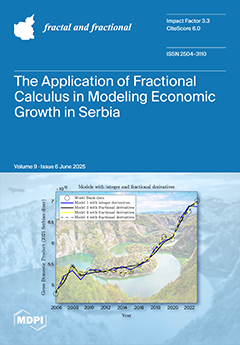Sandstone reservoirs exhibit strong heterogeneity and complex microscopic pore structures, presenting challenges for quantitative characterization. This study investigates the Chang 8 tight sandstone reservoir in the Jiyuan, Ordos Basin through analyses of its physical properties, high-pressure mercury injection (HPMI), casting thin sections (CTS),
[...] Read more.
Sandstone reservoirs exhibit strong heterogeneity and complex microscopic pore structures, presenting challenges for quantitative characterization. This study investigates the Chang 8 tight sandstone reservoir in the Jiyuan, Ordos Basin through analyses of its physical properties, high-pressure mercury injection (HPMI), casting thin sections (CTS), and scanning electron microscopy (SEM). Deep learning techniques were employed to extract the geometric parameters of the pores from the SEM images. Fractal geometry was applied for the combined quantitative characterization of pore parameters and fractal dimensions of the tight sandstone. This study also analyzed the correlations between the fractal dimensions, sample properties, pore structure, geometric parameters, and mineral content. The results indicate that the HPMI-derived fractal dimension (
DMIP) reflects pore connectivity and permeability.
DMIP gradually increases from Type I to Type III reservoirs, indicating deteriorating pore connectivity and increasing reservoir heterogeneity. The average fractal dimensions of the small and large pore-throats are 2.16 and 2.52, respectively, indicating greater complexity in the large pore-throat structures. The SEM-derived fractal dimension (
DSEM) reflects the diversity of pore shapes and the complexity of the micro-scale geometries. As the reservoir quality decreases, the pore structure becomes more complex, and the pore morphology exhibits increased irregularity.
DMIP and
DSEM values range from 2.21 to 2.49 and 1.01 to 1.28, respectively, providing a comprehensive quantitative characterization of multiple pore structure characteristics. The fractal dimension shows negative correlations with permeability, porosity, median radius, maximum mercury intrusion saturation, mercury withdrawal efficiency, and sorting factor, while showing a positive correlation with median and displacement pressures. Among these factors, the correlations with the maximum mercury intrusion saturation and sorting factor are the strongest (R
2 > 0.8). Additionally, the fractal dimension is negatively correlated with pore circularity and major axis length, but positively correlated with pore perimeter, aspect ratio, and solidity. A higher proportion of circular pores and fewer irregular or long-strip pores correspond to lower fractal dimensions. Furthermore, mineral composition influences the fractal dimension, showing negative correlations with feldspar, quartz, and chlorite concentrations, and a positive correlation with carbonate content. This study provides new perspectives for the quantitative characterization of pore structures in tight sandstone reservoirs, enhances the understanding of low-permeability formation reservoir performance, and establishes a theoretical foundation for reservoir evaluation and exploration development in the study area.
Full article





